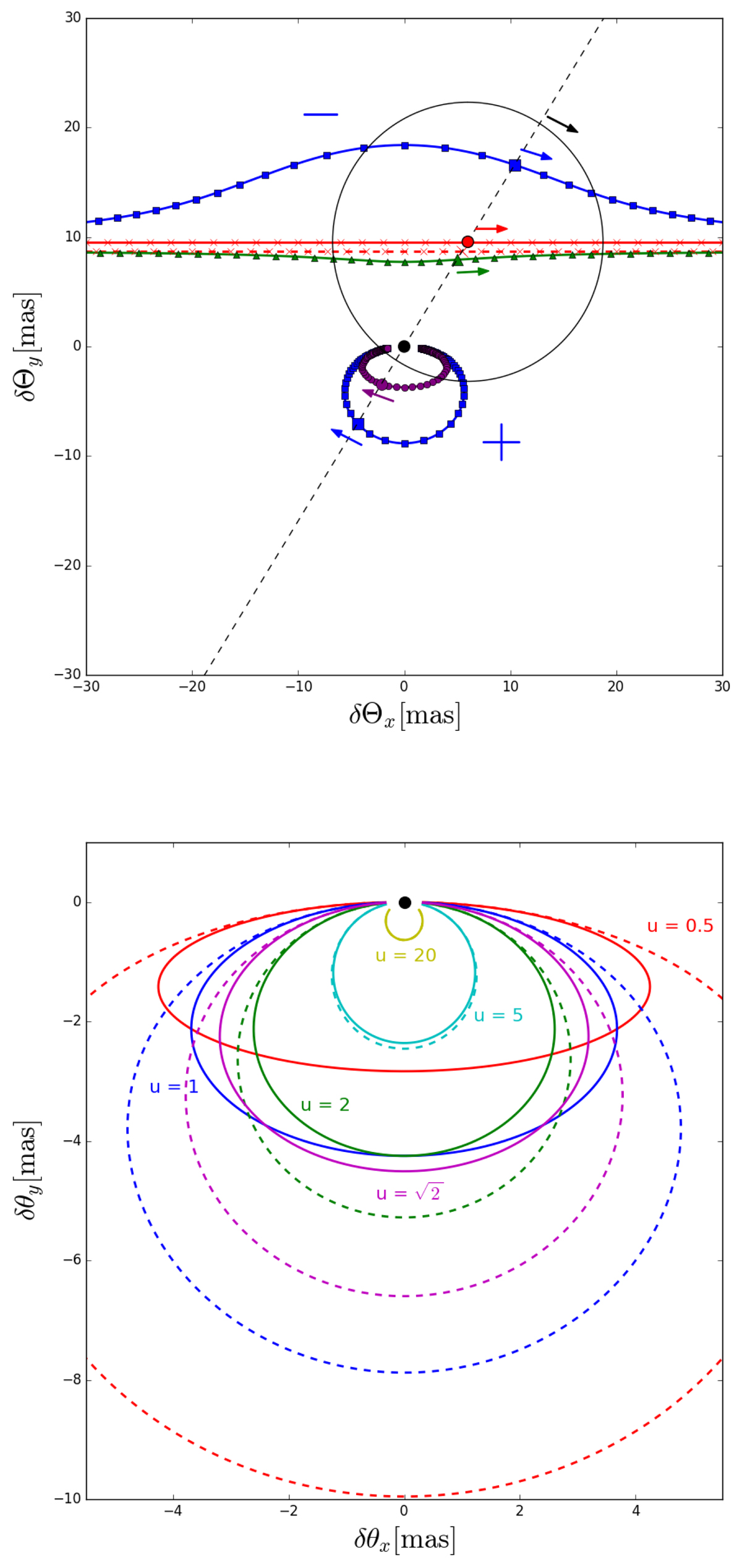Fig. 1.

Top: astrometric shift for an event with an Einstein radius of θE = 12.75 mas (black circle) and an impact parameter of u = 0.75. While the lens (red) passes a background star (black dot, fixed in origin) two images (blue) of the source are created due to gravitational lensing. This leads to a shift of the centre of light, shown in purple for a dark lens. In green, the centre of the combined light is shown for a flux ratio of fLS = 10. The unlensed centre of the combined light is shown as a red dashed line. The black line connects the current positions of the snapshot. While the lens is moving in the direction of the red arrow, all other images are moving according to their individual arrows. The red, blue, and purple markers correspond to certain time steps (after Proft et al. 2011). Bottom: astrometric shift for different impact parameters. The black dot shows the fixed unlensed source position. The solid lines indicate the shift of the centre of light for a dark lens and the dashed lines indicate the shift of the brighter image. The maximum shift of the centre of light is reached at an angular distance of ![]() (purple) (Paczyński 1998), whereas the shift of the brightest image increases continuously with smaller distances.
(purple) (Paczyński 1998), whereas the shift of the brightest image increases continuously with smaller distances.
Current usage metrics show cumulative count of Article Views (full-text article views including HTML views, PDF and ePub downloads, according to the available data) and Abstracts Views on Vision4Press platform.
Data correspond to usage on the plateform after 2015. The current usage metrics is available 48-96 hours after online publication and is updated daily on week days.
Initial download of the metrics may take a while.


